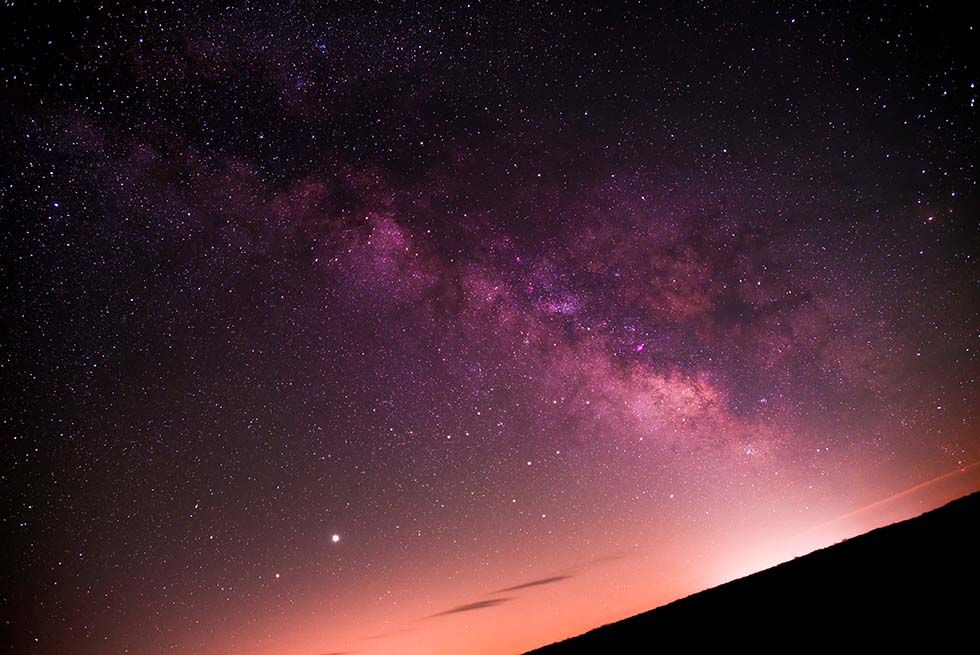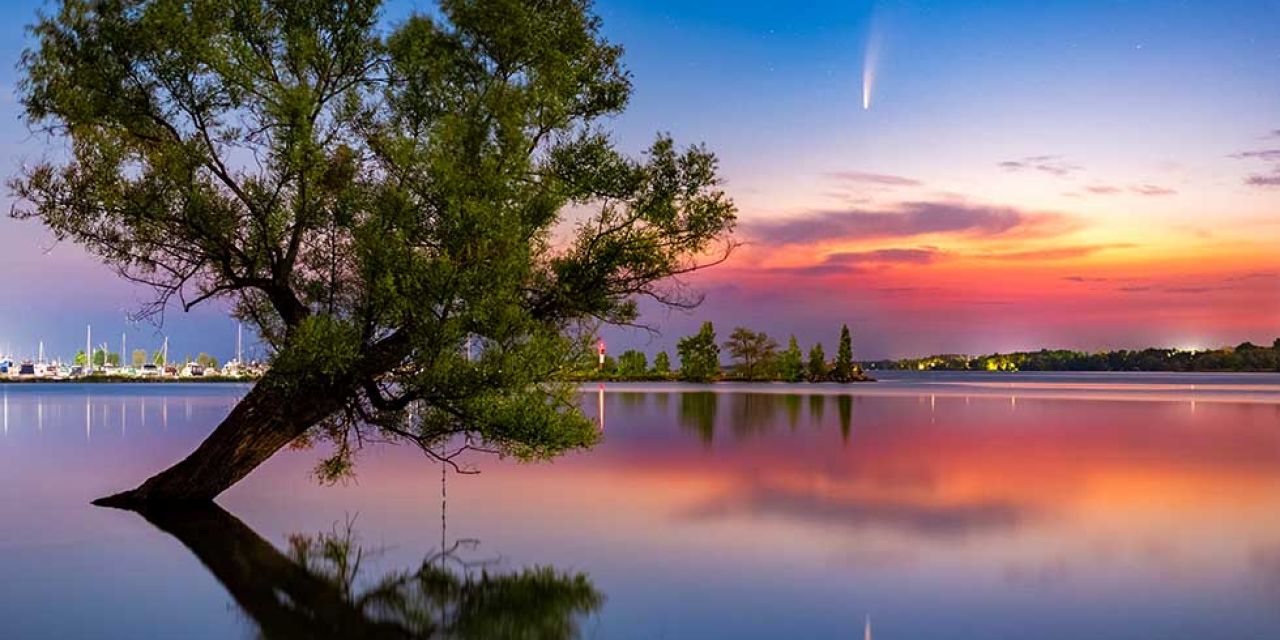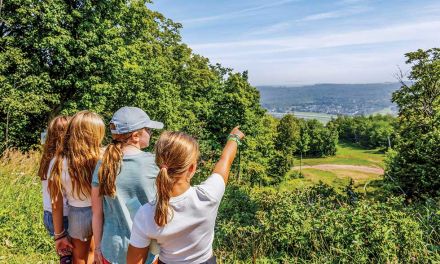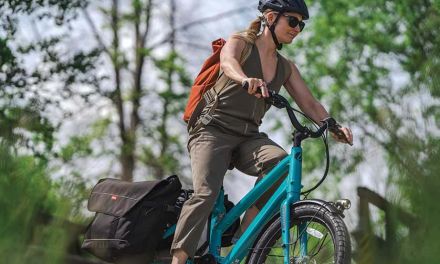Words & Photos by Zak Erb
The world seemed to get a lot smaller last year. Routines were upended, regular activities suspended, I’m sure I don’t have to remind you. While this shrinking of our collective worlds was unquestionably a challenge, it wasn’t all bad. With so many of our day to day pursuits off the table, many were driven to pick up new pastimes which could be carried out close to home—in the backyard even. Have you ever seen so many raised bed gardens or homemade playgrounds?
For me, I enjoy taking photos of beautiful places in Grey/Bruce. Stay at home orders with a houseful of kids made it tough to indulge that pastime, as daytime hours were fully booked and… mildly chaotic. Like the rest of you, I had to adapt. No time for daytime photo outings? Looks like we’re shooting at night. Travel discouraged? Looks like we’re sticking close to home. And so, backyard astrophotography became my outlet. This turned out to be an ideal hobby, as stargazing constantly reminds us that our world is indeed quite small, always has been. Nothing has changed there. And we are, as ever, surrounded by infinite jaw dropping beauty. Now, about a year later, I’ve spent a fair few hours staring up at the sky, fidgeting with camera controls, and while I’m far from being an expert, I’ve put together a few tips for those interested in dipping their toes in the celestial pool.
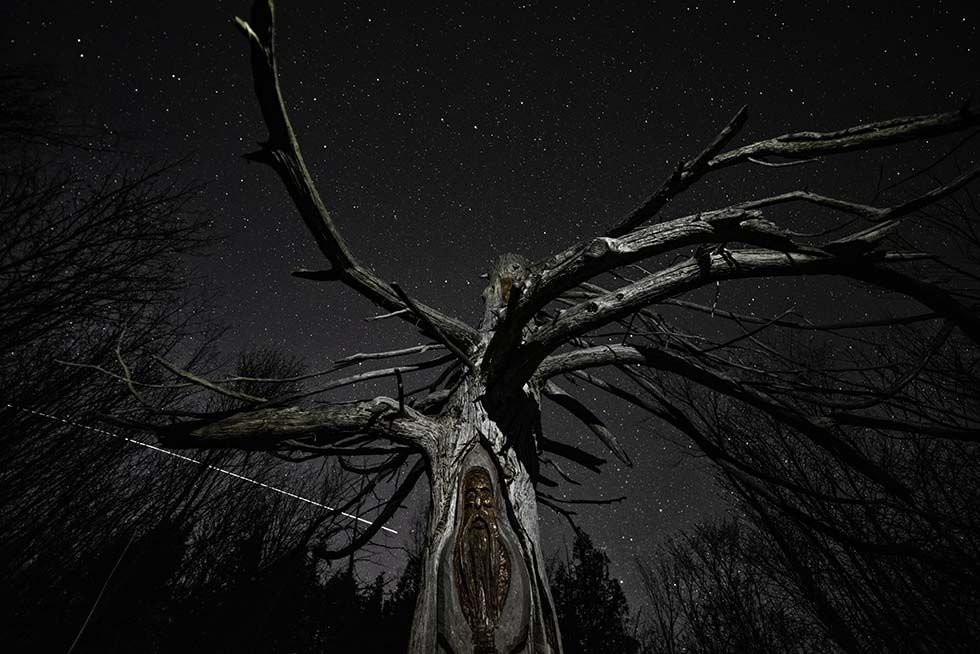
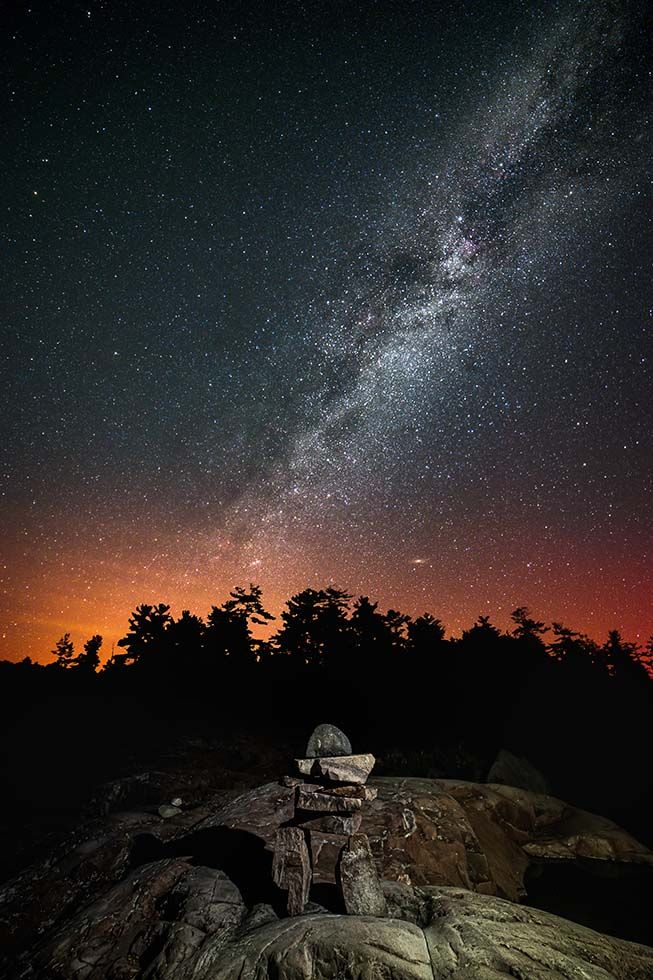
ONE. Make it a family affair. Get the kids or grandkids involved. At first, you’ll get to play the expert, pointing out Polaris and explaining constellations. But soon enough they’ll be reminding you that it’s actually Jupiter, not Mercury, that has the shortest rotation period. This is rewarding, take it from me.
TWO. Stay close to home. Assuming you’re not completely overwhelmed with light pollution, the backyard really
is ideal. It’s easy to get the kids out, and you’re that much closer to coffee (or bed). If you can only see a few of the brighter stars from your backyard, head somewhere rural that you are already familiar with. Dusk is the time to be blazing trails. My preferred local haunt (besides the backyard) is Skinner’s Bluff. Light pollution is minimal, and there’s a huge field of view, but I would never suggest visiting it in the dark, unless you’ve first become familiar with the trail during the day. Safety. First.
THREE. Plan ahead. At a bare minimum, check the cloud coverage before going outside. A large window works great for this, as do all manner of weather and astronomy apps. Check to see if there’s anything interesting visible in the skies from your area. Might the International Space Station be flying over? When is moonrise? Any active meteor showers? The more work you put in beforehand, the quicker you can get to business in the field.
FOUR. Bring a flashlight. Absolutely essential, even in the backyard. Preferably a headlamp. Even better is a lamp that emits low level red or green light, as bright white light will ruin your night vision. A light source is key for safety, locating your dropped lens cap (inevitable), and lighting foreground objects.
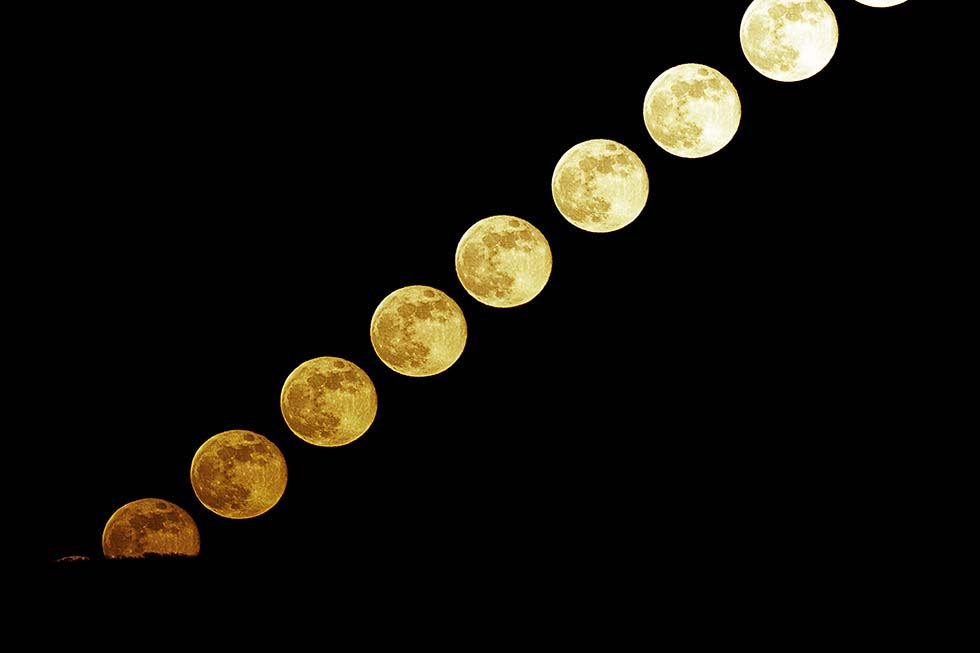
FIVE. Set your camera to manual mode, assuming it has a manual mode, try “night mode” if
it does not. Automatic shutter and aperture priority modes, so handy at family functions, are not your friend at night. Unless you’re shooting the moon, you’ll want to cram every spare photon of light onto your camera’s sensor. Achieve this by opening up your aperture as wide as it goes, cranking your ISO up, and experimenting with your shutter speed starting at 8 seconds or so.
SIX. Use a tripod. Don’t have one? I’m told a bag of rice works too, though it looks nowhere near as cool. It is essential to have your camera stable, as this allows your shutter to remain open without introducing blurring to the image. Make use of a remote shutter release, or your camera’s timer function, as even the motion of depressing the shutter will shake the camera which can spoil your shot.
SEVEN. Don’t give up. Getting an image you’re proud of is not simple. Even achieving focus can present a serious challenge (use manual focus by the way). Stick with it. You will improve every single time you go out. And if your first few shots aren’t exactly high art, you still won’t regret the effort.
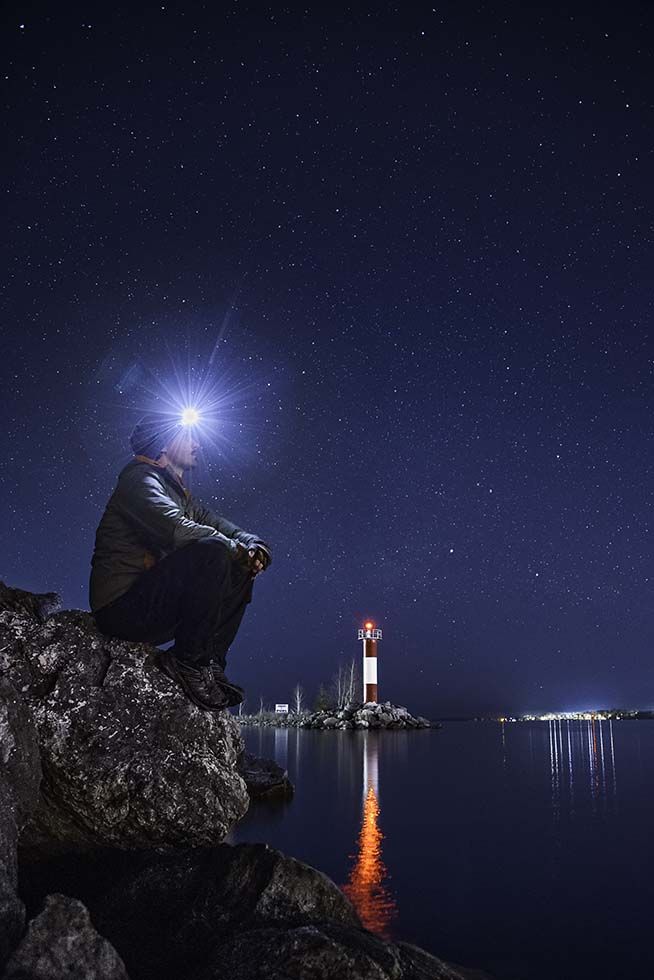
The sky contains so many wonders, and backyard astronomy is a hobby that provides endless enjoyment as you learn to appreciate the beauty of the sky above us. Time spent outside looking into the cosmos, especially with friends or family, is never wasted.
